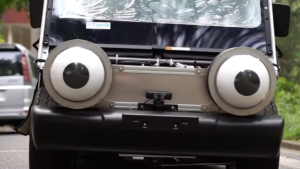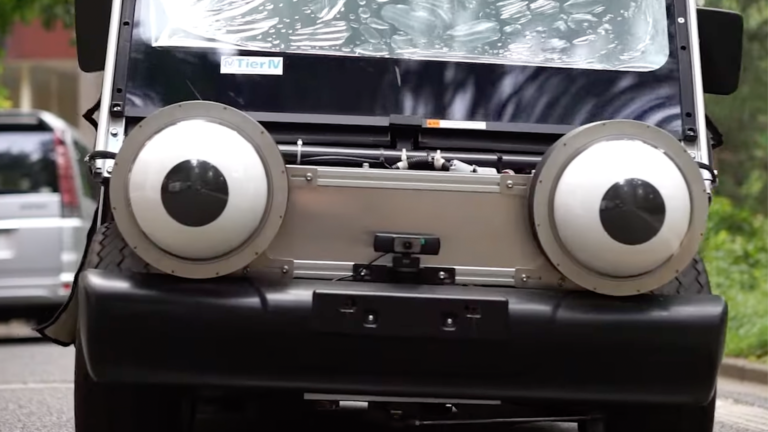If autonomous vehicles didn’t have to watch out for pedestrians, such as robotaxis, the development would be way easier. That wasn’t a quote from Elon Musk; it was simply a thought. Proof can be found in the fact that University of Tokyo researchers tried to address the pedestrian issue by fitting an automobile with large eyes. Yes, they fitted a self-driving car with large eyes that could see the humans its sensors were detecting. Do not approach it if it is not glaring at you.
Researchers discovered that having eyes on an AV could cut dangerous crossings by as much as 64% in a trial involving nine men. Is it actually that easy? The complete study offers a more complex analysis of what actually happened
Along with the men, nine other ladies were also participating. In their situation, the addition of eyeballs did not significantly increase the safety of crossing the roadway. One appears to be because women initially crossed the street with greater caution, at least according to this study.
According to the publication, men behave differently when crossing streets than women do. The male participants, for instance, were asked to rate subjectively how much the eyes influenced their choice to cross. Even though the addition of the eyeballs decreased the frequency of hazardous crossings, they largely said that it didn’t matter to them where they were looking. The female study group’s responses were far more varied and ambiguous.
In terms of perceived safety, the majority of the female respondents claimed they felt safer when the car had large eyes. The men seemed unconcerned. The results were a resounding “meh” for both groups’ initial reactions to the car having eyes.
The eyes can only focus on one person at a time, which is an evident flaw in this system. Unless there are multiple pairs of eyeballs or they become cockeyed. I’m genuinely at a loss for a viable answer to the issue of several pedestrians in this configuration.

Either the car has multiple eyes, which is weird, or its eyes dart quickly to the various targets they perceive, which is creepy, or its two distinct eyes are tracking various pedestrians at once. In fact, I can think of a word to characterize that last option.
The study addresses this issue by pointing out that, in the normal course, people who cross the street in front of cars look at the driver to make sure they’re paying attention. Even if there are other pedestrians around, they may tell by the driver’s expression that they are aware of the obstacle in the form of a person in front of them. But how exactly this translates into a car having a face is less concrete. Clearly, more investigation is required.
However, for the time being, the study’s narrow focus makes its conclusion more debatable. Do you want automated vehicles to be viewed? How about other facial characteristics? I believe that self-driving automobiles ought to have personalities and moods. I don’t have to deal with friendly automobiles or mean cars because I don’t reside in a city center. It would just be humorous to me.


